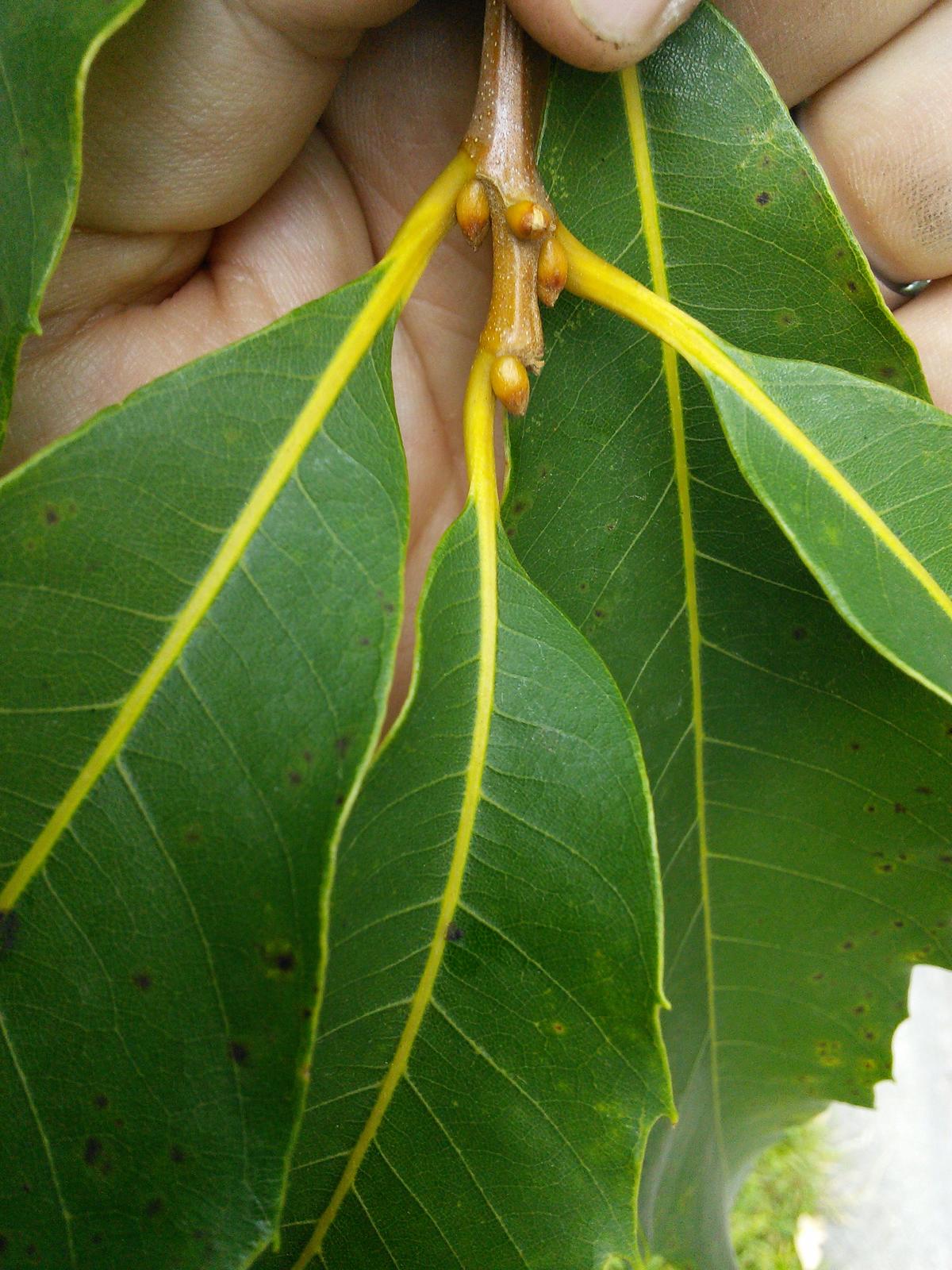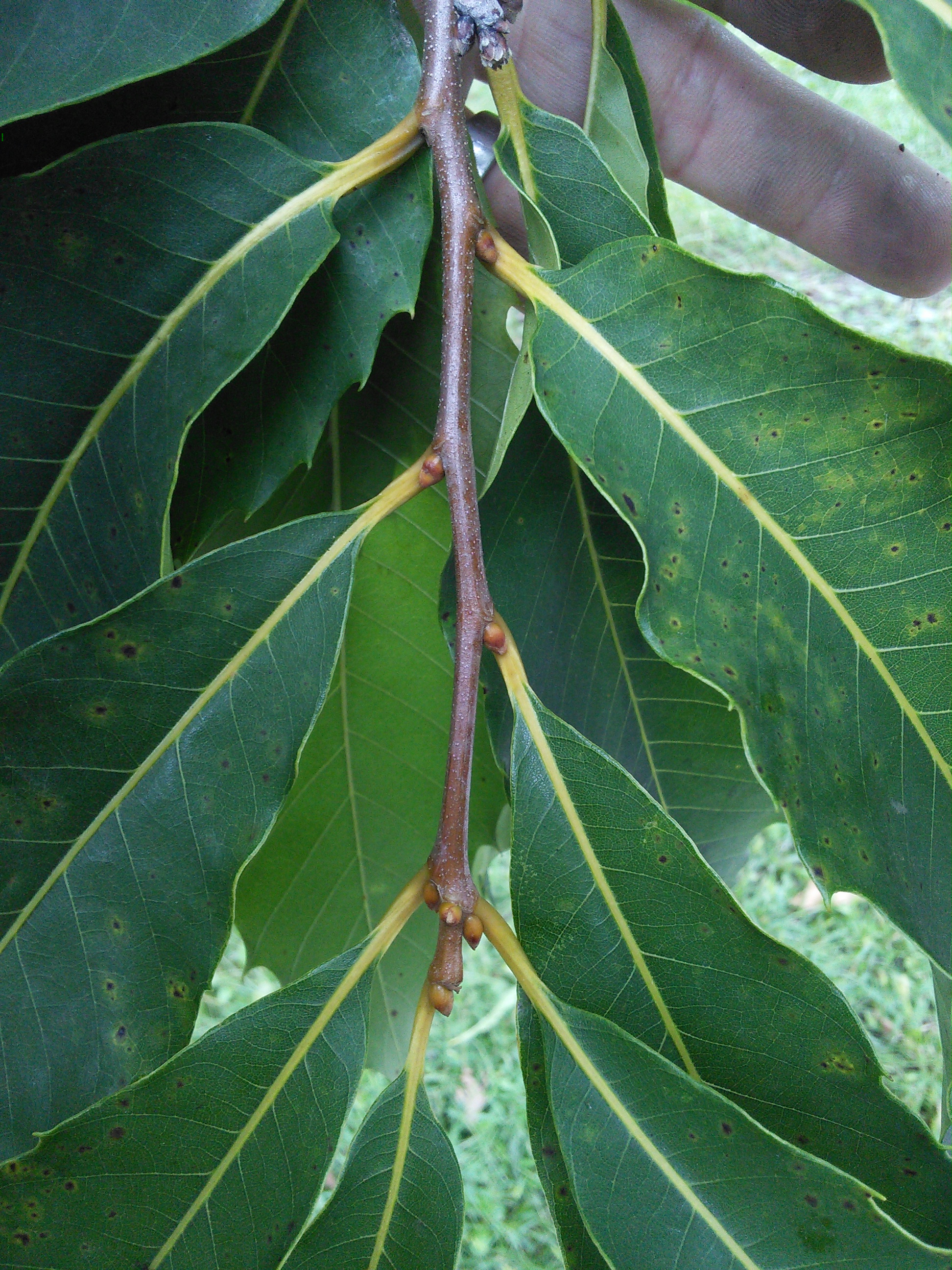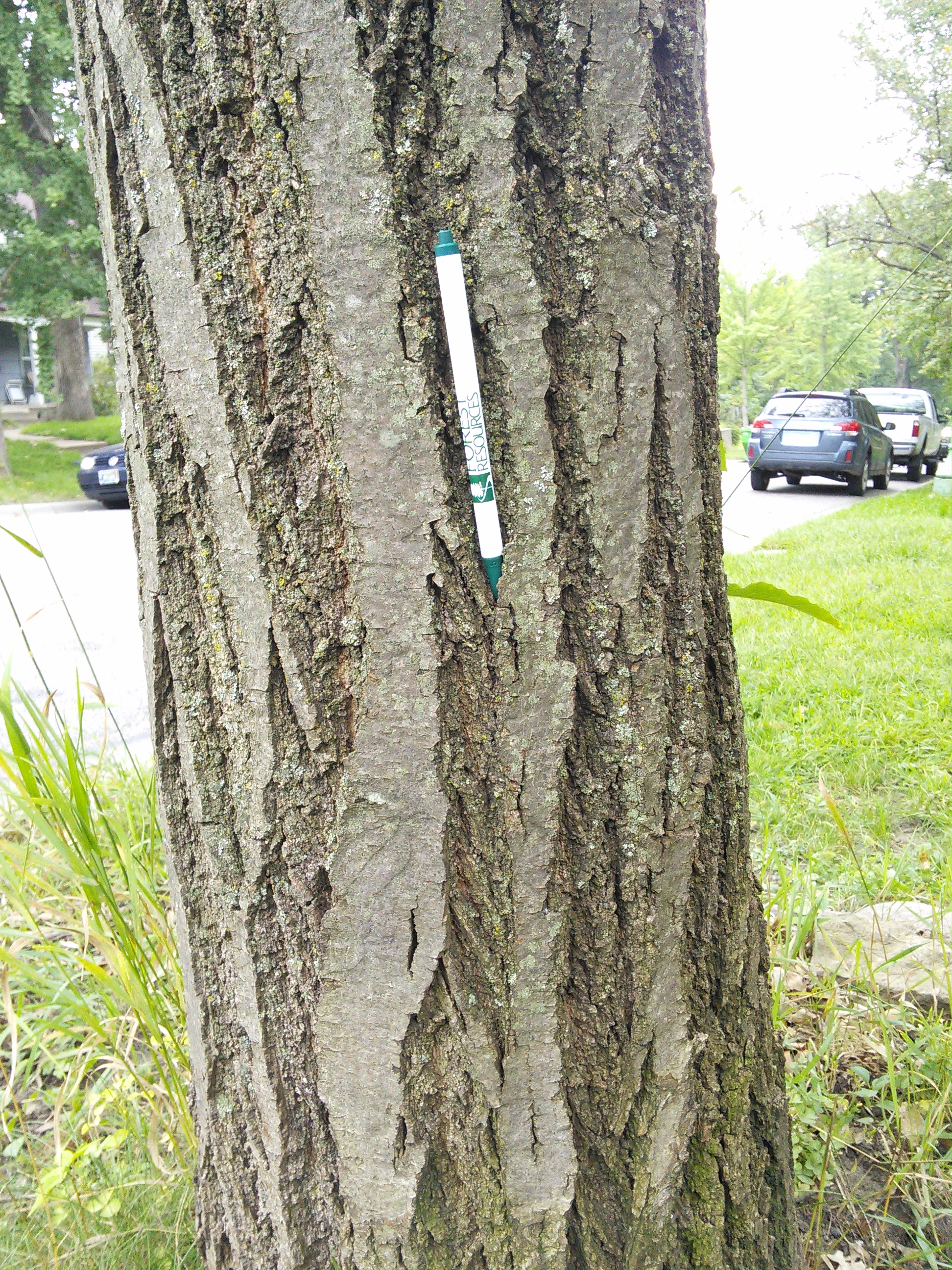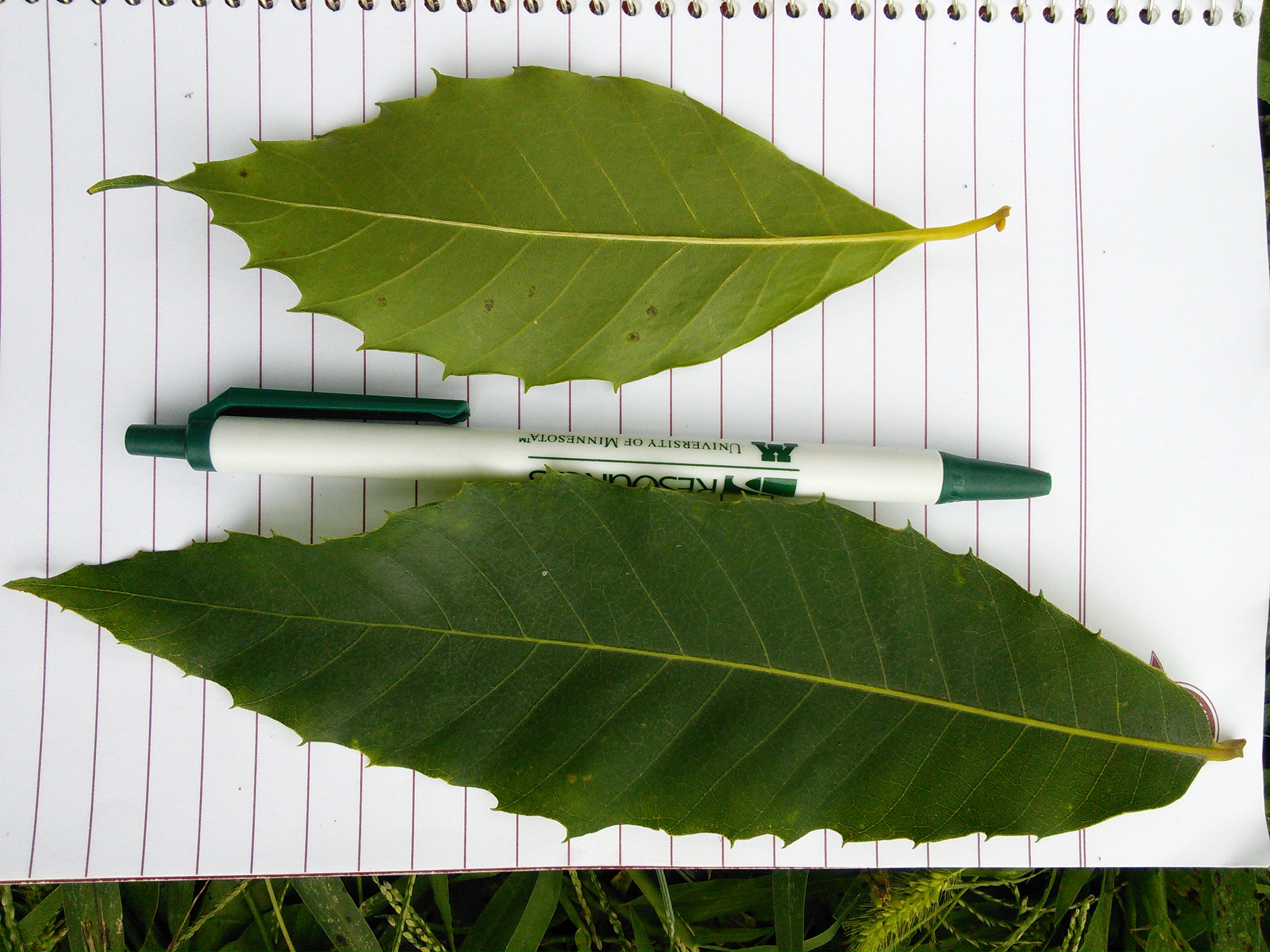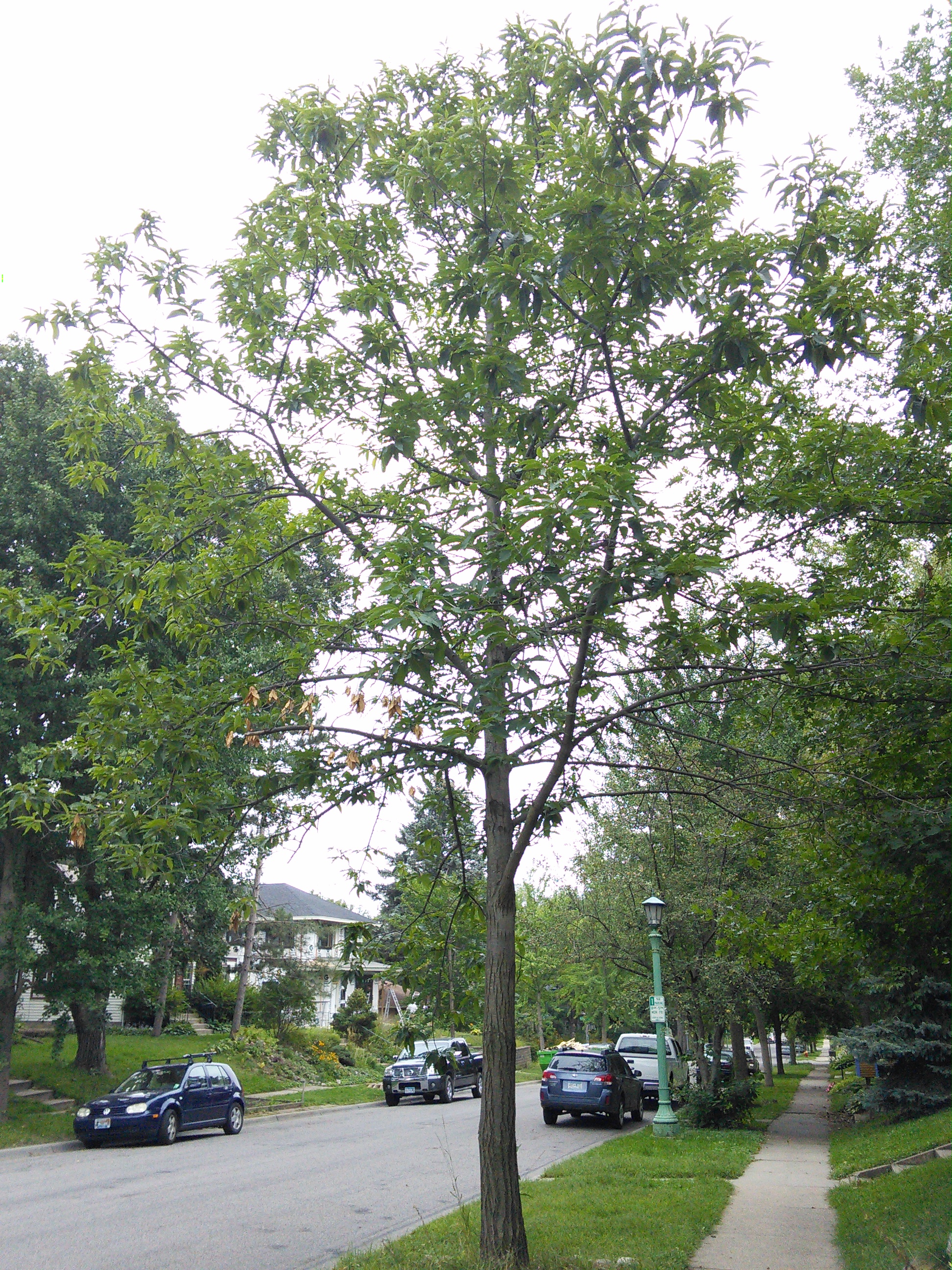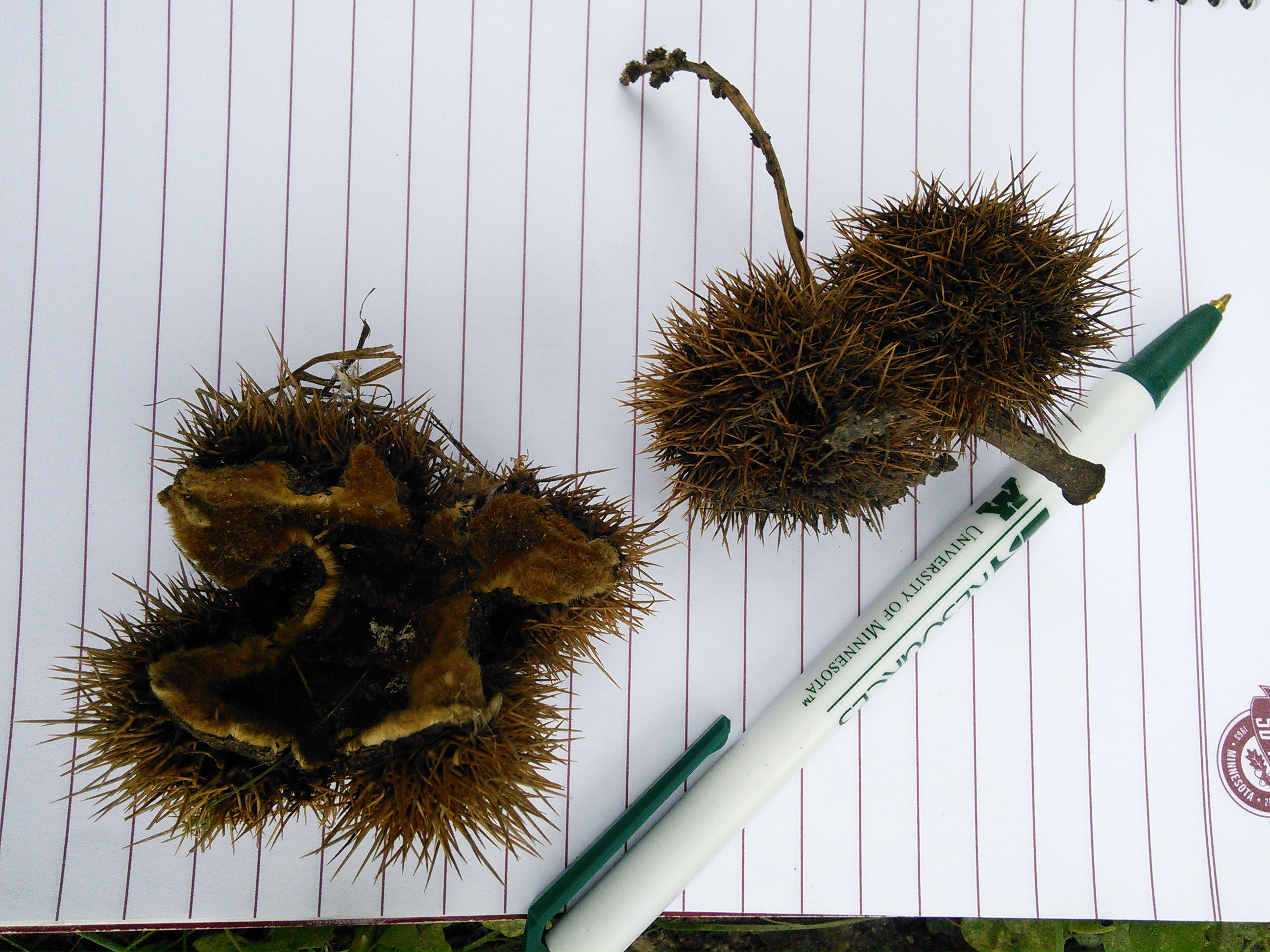Common Name: American chestnut
Scientific Name:
Family: Fagaceae
Genus: Castanea
Species: C. dentata
Hardiness Zone: 4a to 8a
Height: 100 ft
Width: 100 ft
Common Characteristics:
The American chestnut was once a very common tree but is now extremely rare due to chestnut blight. Remnant root systems are resilient and continue to send up new shoots that eventually succumb to the blight. The American chestnut is a large tree with brown, smooth buds and twigs. The tree can grow upwards of 100 feet in height and 10 feet in diameter. The bark, though brown like the twigs and buds, is very uneven consisting of deep furrows and flat-topped ridges in maturity. The leaves are about 6 inches long and have serrated edges. The tree has creamy yellow flowers in June and nuts later in the year.
Where it Grows:
American chestnut tends to grow best in sunny areas that have well-drained moist acidic soils. These soils are formed from shale, sandstone, and limestone parent materials. It can also tolerate dry and clay soils.
How it is Used:
The chestnut tree was once an important economic species due to its strong and rot-resistant lumber. There are no longer any commercial uses for it.
Ecosystem Services:
The nuts are encased in a spiny casing and once cracked open, they are edible and sweet. The species was also an integral part of the forest ecosystem, providing shelter and nutrition to a diverse number of species.
Where it is Native To:
It was found naturally as a dominant overstory species in eastern United States' deciduous forests. Its native range is mainly the eastern United States, following the Appalachian Mountains range. It reaches from Maine, down to Mississippi, and from North and South Carolina to the Mississippi River.
Known Varieties and Their Traits:
Efforts to re-establish the American chestnut tree have been underway for some time, applying both traditional breeding and transgenic methods.
- Dwarf Chestnut (Castanea pumila): Also known as chinkapin, chinquapin, and American chinquapin. This variety has a deep green leaf that is hairy on the underside if exposed to the sun. It has purple twigs with dark red pointy buds. This tree only produces one nut that is sweet. This variety has slight blight resistance.
- Japanese Chestnut (Castanea crenata): The Japanese chestnut has serrated leaf edges with glands and fine hairs on the underside when exposed to the sun. The twigs are can be pink to a light red in color with large white lenticels that have round, glossy brown buds. 2 to 3 nuts are produced in a cluster and do not have a very sweet flavor to them. They are a popular seasonal ingredient in Japan. This variety has moderate blight resistance.
- Chinese Chestnut (Castanea mollissima): This variety has dentate leaf margins and hairy undersides when the leaves are in the sun. Twigs can be tan to pea-green with elliptical yellow lenticels. The buds are rounded and are hairy, ranging in color from tan to dark brown or black. This variety produces 2 to 3 clusters and is sweet in taste. Blight resistance is high for Chinese chestnuts. The physical characteristics of this species are much different than the American chestnut. The stature of a mature Chinese chestnut is more similar to that of a large old apple tree growing 40 to 60 feet in height with a similar spread. Though the two species have quite different physical appearances, they can be crossed with one another to make hybrid offspring.
- European Chestnut (Castanea sativa): The European chestnut leaves have dentate margins with some leaves being hairy and others not when exposed to the sun. The twigs are stout and dark brown in color with white lenticels. The buds are globular in shape and dark red in color. 2 to 3 nuts are produced per cluster and are starchy. This variety has slight blight resistance.
Problems:
Chestnut blight is a disease that came into the United States in the 1900s, killing almost all of the American chestnut trees in the country. The blight is caused by the fungus Cryphonectria parasitica, a member of the Ascomycota phylum. The fungus easily colonizes the damaged bark of the chestnut tree and proceeds to penetrate through to the healthy cambial tissue of the tree with a structure known as a hyphal fan. Stromata form on the bark’s exterior where the orange-colored spores are released from sexual and asexual fruiting bodies.
Other Details:
The American Chestnut Foundation has been conducting its ‘Backcross Breeding Program’ since 1989. After an initial cross between Chinese and American chestnut parents, offspring of three successive generations are backcrossed to American chestnut resulting in a tree that, genetically speaking, is almost 94% American chestnut. The offspring of each generation are tested for resistance to the fungus, and only the most resistant trees are kept for the next round of backcrosses or intercrosses. Learn more about this work at The American Chestnut Foundation's website.
Another hope for restoration is from a virus that naturally attacks, C. parasitica. Hypoviruses enabled European chestnut to begin recovery in the 1950s, which was also decimated by C. parasitica. So far, only a single instance of a naturally occurring hypovirus has been observed in Michigan. Since the discovery, the hypovirus has been isolated and is used to treat a survivor stand of American chestnuts in West Salem, Wisconsin.
Current genetic engineering methods seek to introduce single genes into the American chestnut which confer resistance to the fungus but maintain the physical appearance and properties of the tree. Genes have been taken from plant species such as Chinese chestnuts, wheat, grapes, and peppers (Powell). Researchers hope to introduce the transgenic trees back into the wild in hopes of restoration.
References:
The influence of American Chestnut (Castanea dentata) on nitrogen availability, organic matter and chemistry of silty and sandy loam soils. 2007. Charles C. Rhoades. Pedobiologia (50): 553-562.
